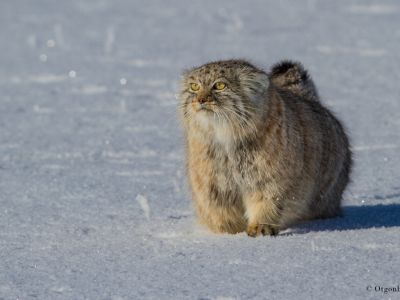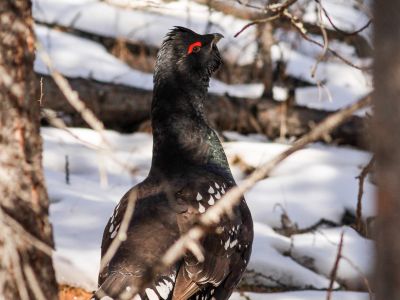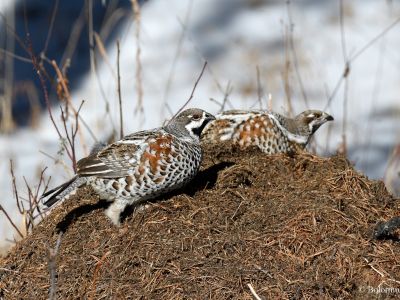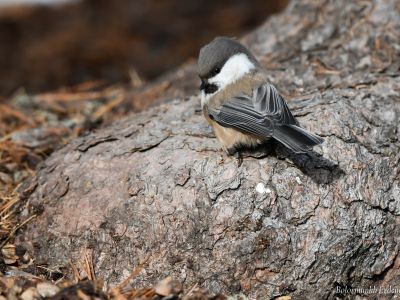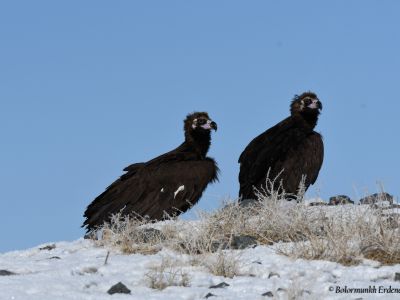Winter mammal and birding tour
This tour combines birding and mammal watching in Siberian Taiga forest, gently rolling hillsand rugged rocky mountains of Central Mongolia and Eastern Mongolian steppe grassland.
Summary
This tour combines birding and mammal watching in Siberian Taiga forest, gently rolling hills and rugged rocky mountains of Central Mongolia and Eastern Mongolian steppe grassland. The tour is specifically designed to observe winter wildlife.
Imagine experiencing genuine winter of continental Asia covered by inches of deep snow meanwhile enjoying the fascinating world of eastern Palearctic fauna on this winter wildlife tour. Winter of Mongolia can be described by one word “silence”. In the steppe only sound you might hear could be the sound of dry grass crunching under your boots. You might find absolute peace here compared to the fast-paced daily urban life of the western world.
Some part of Mongolia is relatively well explored by tourists during the short warm season in the summer. However very few, even the locals, ventured to explore the beauty of the long winter of Siberia.
Compared to some parts of the world, like Africa, where a sheer number of large mammals are out in the open and easy to see, mammal observation in Mongolia, however, can be a bit more challenging. Many mammals here are found in lush taiga forests, high mountains and southern desert and are small to medium-sized; many are mostly nocturnal and hibernate when the cold season arrives. However, we do our best to spot as many mammals and bird species as possible meantime prioritizing our target species.
Key target species
- Mammal: Pallas’s cat, Mongolian wolf, (Canis lupus chanco), Eurasian lynx, Corsac fox, Altai argali (the world’s largest wild sheep), Siberian ibex, Takhi aka Przewalski’s horse, Altai wapiti (Cervus canadensis sibiricus), Mongolian gazelle, Siberian flying squirrel and Mountain hare
- Bird: Black-billed capercaillie, Black grouse, Hazel grouse, Daurian partridge, Willow ptarmigan, Upland buzzard, Rough-legged buzzard, Saker falcon, Northern goshawk, Golden eagle, Cinerous vulture, Ural owl, Eagle owl, Eurasian three-toed woodpecker, White-backed woodpecker, Black woodpecker, Azure-winged magpie, Siberian jay, Bohemian waxwing, Azure tit, Siberian tit, Red-throated thrush, Black-throated thrush, Mongolian lark, Pere David’s snowfinch, Siberian accentor, Arctic (Hoary) redpoll, Common redpoll, Long-tailed rosefinch, Pallas’s rosefinch, Two-barred crossbill, Baikal bullfinch, Lapland longspur and Meadow Bunting
- Tour dates: October – March
- Duration: 14 – 18 days
- Availability: Full / Available
ITINERARY
Taiga forest: Taiga, also known as boreal forest (mostly in North America) is a biome characterized by coniferous forests consisting mostly of pines, spruces and larches. It is the world's largest land biome, making up 24% of the world's forest cover.
The largest area being in Canada and Russia, 3/5 of the taiga extension is in Eurasia. Mongolia’s northern part is covered by approximately 11 million ha of taiga forest which forms the southern extension of the Siberian taiga forest. The biggest chunk of taiga in Mongolia is called Khentii Mountains (northeastern Mongolia), where the Siberian forest belt borders the Central Asian expansive steppe grassland, represent a unique and greatly untouched ecosystem.
The mountainous areas of Terelj national park is located at the southern end of Khentii Mountains will be our key destination. It is covered mostly in larch, pine and birch forests, narrow valleys and green meadows bisected by wild, rugged rivers.
The typical taiga resident bird species include impressive Black-billed capercaillie and intricately patterned Hazel grouse, Northern Goshawk, Siberian Jay, Brandt’s Jay, Spotted Nutracker, Siberian Tit and several species of woodpeckers such as White-backed, Grey-headed, Eurasian Three-toed and Lesser Spotted, as well as the regal Black woodpecker.
Hustai national park: Hustai National park, situated in a beautiful mountain steppe ecosystem comprised of gently rolling hills, open grasslands and patches of birch forest. The main attraction of the national park is the herds of Przewalski’s Horses, or “Takhi” as they are called by the local Mongolians. At one time extinct in the wild (in Mongolia, the last wild Przewalski's horses had been seen in 1966), it has been reintroduced from various European zoos to its native habitat in Mongolia at 3 different locations since 1992. As being the first site of the reintroduction of takhi, Khustai national park hosts almost 400 wild horses currently.
In this biodiversity rich reserve, our first mammals of the trip will be Altai wapiti, Corsac fox, Mongolian marmot and adorable little Daurian pikas. Array of raptor species such as Cinereous vulture, Himalayan griffon, Golden and Steppe eagle, Saker and Amur falcon, Lesser kestrel and Upland buzzard are seen soaring high in the sky or feasting on dead livestock. Also, other bird species such as Daurian partridge, Meadow bunting, Mongolian lark and Asian short-toed Lark occur all year round here.
We have our best chance to encountering wild wolves (Mongolian wolf) in this park. Furthermore, the park hosts small population of Argali, Siberian Ibex and Mongolian gazelle.
Ikh Nart Nature reserve: Ikh Nart is a nature reserve located in the East Gobi Province of Mongolia. Established in 1996, Ikh Nart covers an area of about 66,000 hectares of grassland and semi-desert steppe environments and harbors the largest populations of Argali Sheep and Siberian Ibex in the country.
Eastern Steppe: Highly undisturbed and intact dry steppe ecosystem situated in south eastern Mongolia hosts an array of species including Pallas’s cat. In Eastern Mongolia we will be accommodated in a pre-set-up camp surrounded by breathtaking expansive open space. During these days in this true wilderness we unlikely to see other people except for our camp staff and your mammal guide who will be helping us to observe this cute fluffy feline which we expect to see on more than one occasion.
Accommodation: During entire tour our guests will be accommodated in Ger camps specially set up for the trip. Gers are the traditional round shaped, portable, felt dwellings in which Mongolians have lived for thousands of years. These ger camps are similar to motels and are spacious and cozy, often heated by wood or coal fires. Each ger has twin beds, bedding consisting of blankets, sheets, pillow and duvet. Washing and toilet facilities at these camps are basic but do consist of separate toilet and shower buildings. There will be a separate dining Ger with table and chairs.
TOUR REPORTS
| Report names | Report summary |
|---|---|
| Winter Snow Leopard and Pallas's Cat photography tour. 08 - 25 Feb 2019 | TOUR REPORT |
| "Tour report name" | TOUR REPORT |
TOUR DATES
| 2024 - 2025 | |||
|---|---|---|---|
| Departures | Availability | ||
| October – November 2024 | SPACES | BOOK TOUR | SHOW DETAILS |
| February – March 2025 | SPACES | BOOK TOUR | SHOW DETAILS |



